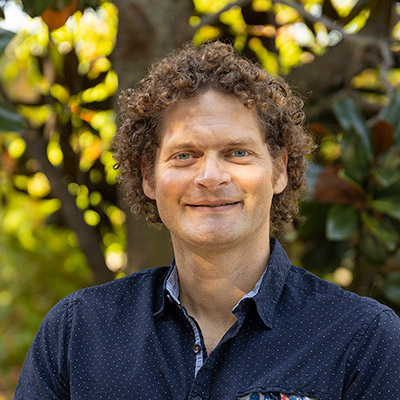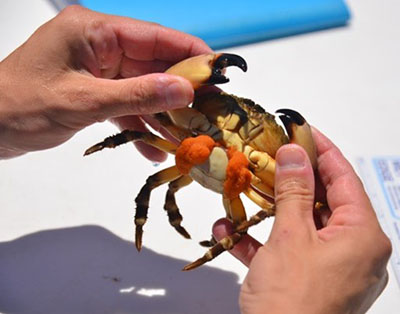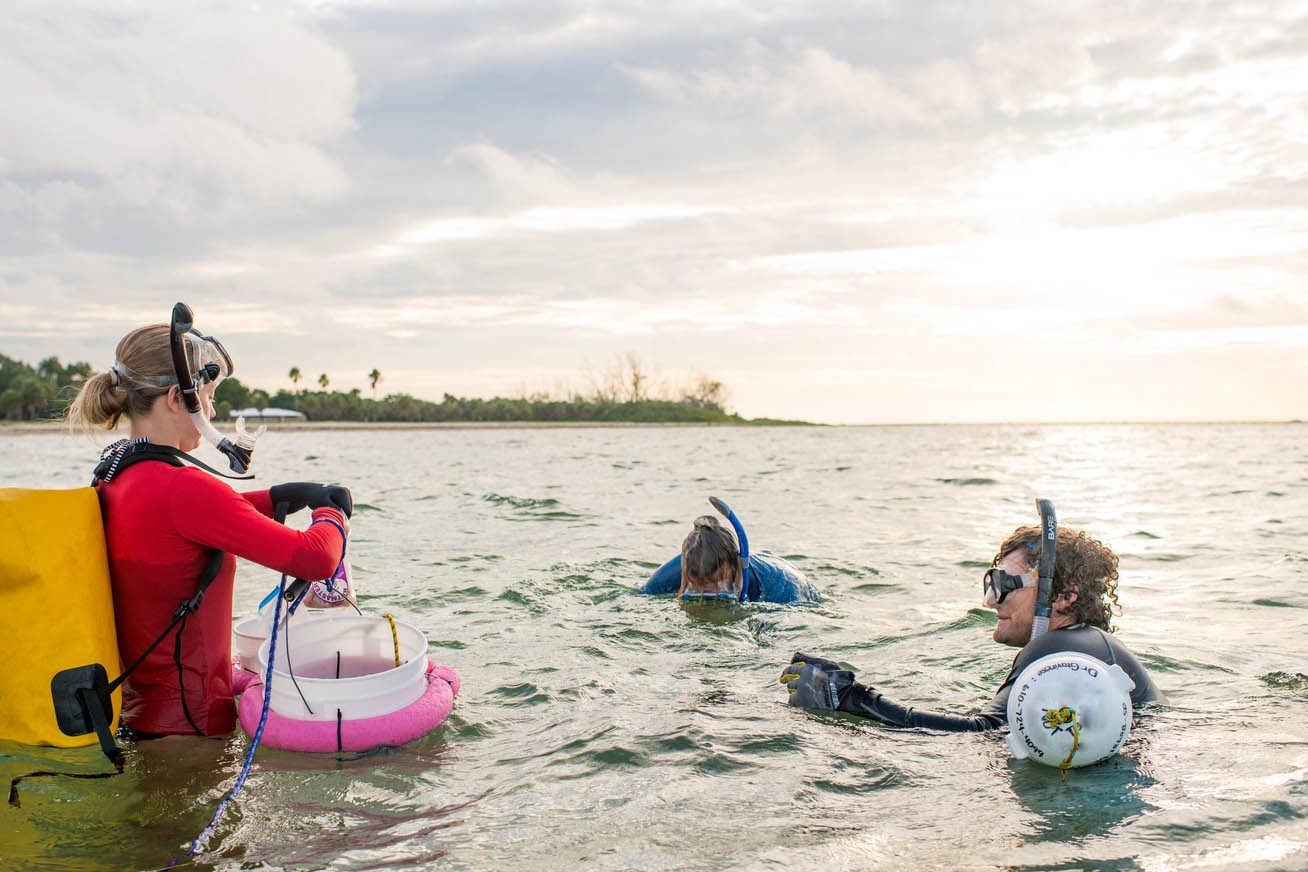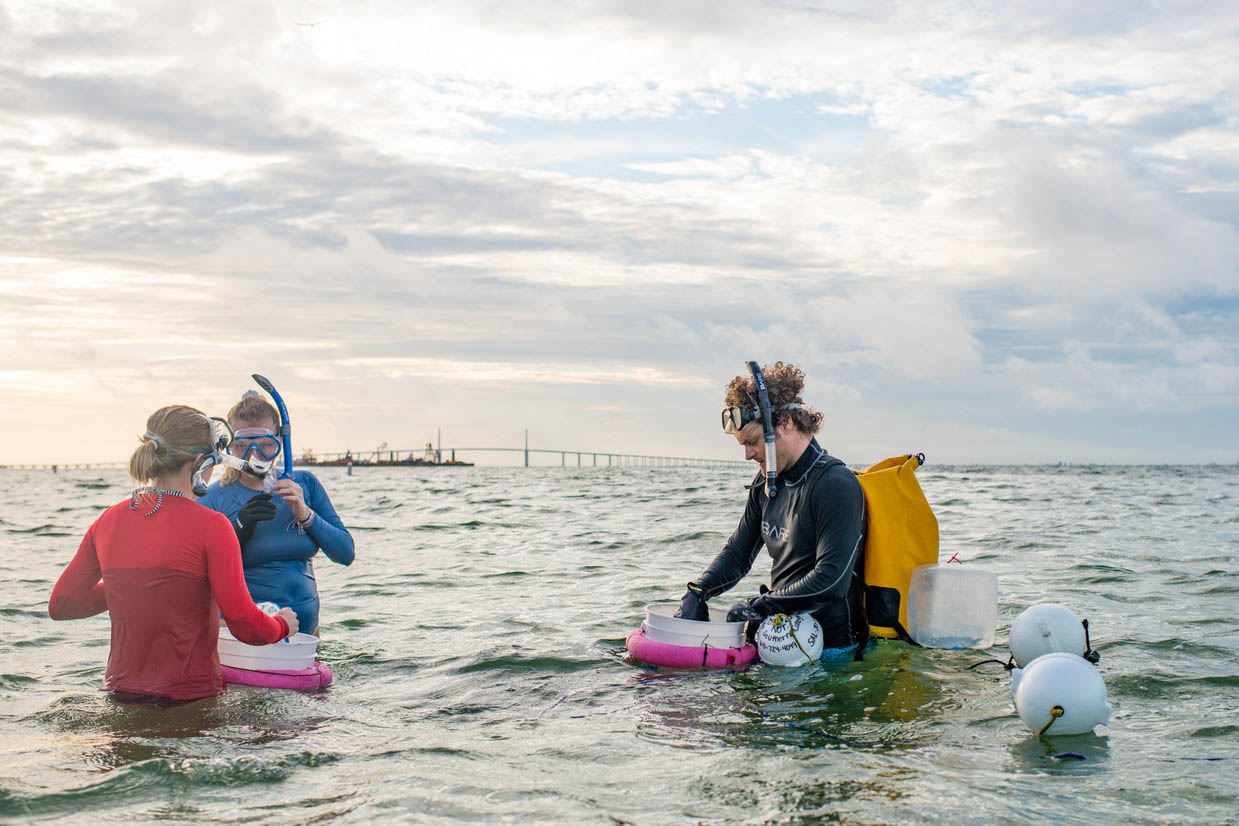The way Philip Gravinese, Ph.D., sees it, research is important not just for what can be discovered but for how that information can be shared.
In keeping with that philosophy, Gravinese, an Eckerd College assistant professor of marine science, recently co-authored a paper titled “Do pH-Variable Habitats Provide Refuge for Stone Crabs from Coastal Acidification?” It was published Nov. 15 in the journal Oceanography.
“The paper is a lesson developed for educators that is based on some of the ongoing research I’ve been doing near Fort De Soto Park,” Gravinese explains. “In this work we are looking at stone crab reproductive success between sandy habitats (narrow pH range) and seagrass habitats (wider pH range) to see if the pH range between those habitats provides the stone crab with any reproductive advantage under future climate change reductions in seawater pH.”
The project is being funded by the Tampa Bay Estuary Program.
Last year, Gravinese and two researchers from Louisiana State University were awarded a four-year, $922,000 grant from the National Science Foundation to study the impact of climate change on stone crabs. The goal is to investigate and model how rapidly changing ocean temperatures and pH levels disrupt stone crab larval development, behavior and dispersal among habitats along the Florida coasts. Gravinese’s previous work has shown that stone crabs can be sensitive to environmental stressors throughout their larval development.
The lesson, Gravinese says, is “a form of educational outreach and an effort to communicate our results with the community, educators and students. We take subsets of the data we collect and develop an interactive lesson for educators at the college and high school level.

Searching for stone crabs

Philip Gravinese, Ph.D.
“I chose Oceanography because the journal has a hands-on educational section which undergoes peer review and is open access, which helps to get the data out to educators for free.”
The lesson uses data Gravinese and his research team collected from a local monitoring station in Tampa Bay to guide students toward understanding how coastal acidification may impact the reproductive success of the Florida stone crab, an important commercial fishery.
The objectives are for students to determine how pH varies between different habitats, determine how pH can affect the reproductive success of the stone crab, and evaluate whether exposure to variable seawater pH results in greater reproductive success in stone crabs relative to individuals that are not exposed to pH variability.
Eckerd students who work in Gravinese’s lab will gain experience helping to develop other lessons in the future.
“I am excited that two contributors to this paper are former students of mine,” he says, “and I fully expect students who work in my lab at Eckerd to participate in the publication process. The students could actually get a publication of their own before they graduate.
“That’s important,” he adds, “because another component of science is being a good communicator and conveying your message to the public. Community outreach is a great way to show students you can do exciting, important work and convey that to people who might not otherwise have access to it.”

The underside of a stone crab














